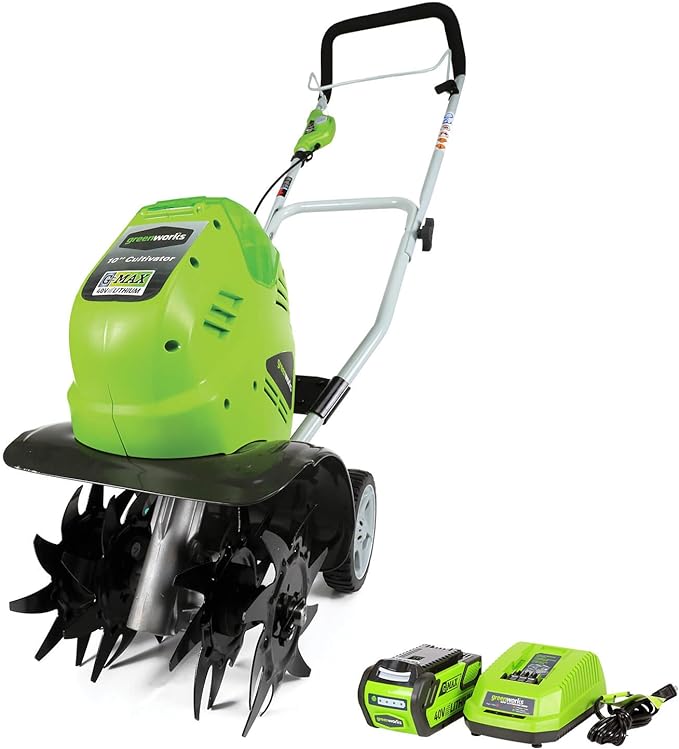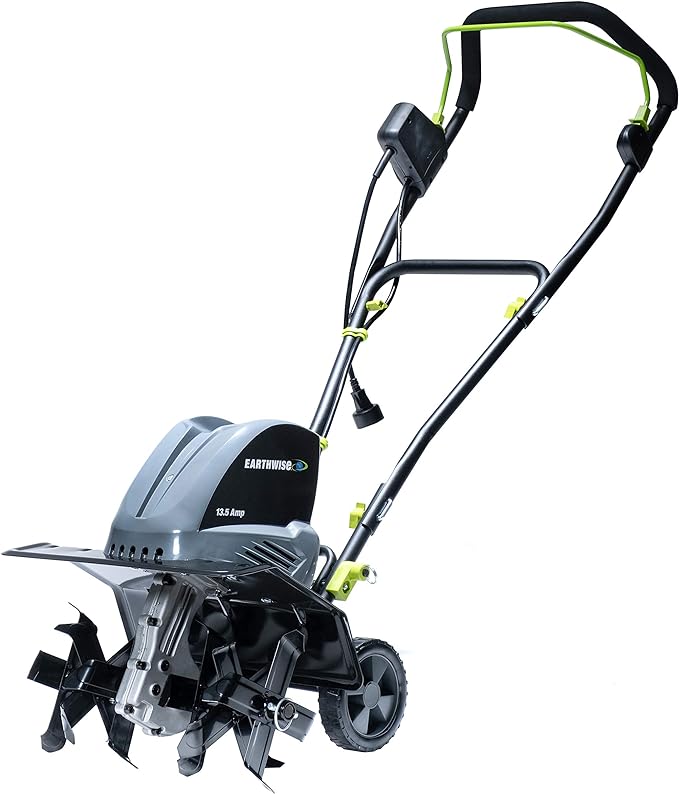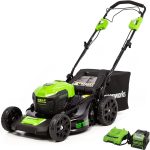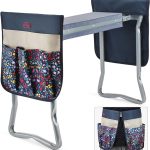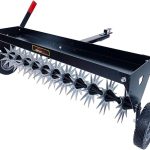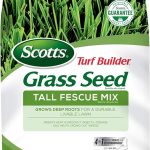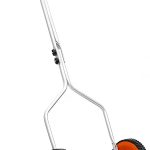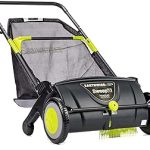Did you know that over 70% of homeowners prioritize gardening and lawn care? If you’re among them, you’re likely aware that a reliable tiller is essential for preparing your outdoor space. With so many options available, choosing the right one can be overwhelming. From cordless and electric to gas-powered, each type offers unique benefits. You’re probably wondering which tillers stand out from the rest. Let’s explore the top seven tillers that can help you achieve a lush and thriving garden – and discover which one might be the perfect fit for your specific needs.
Contents [show]
Greenworks 40V Cordless Tiller / Cultivator
If you’re looking for a tiller that can efficiently break up compacted soil without the hassle of gas, oil, or emissions, the Greenworks 40V Cordless Tiller / Cultivator is an excellent choice.
This powerful tool provides the power you need to break up hard, compact soil into loose, broken-up dirt for planting.
With its adjustable tilling width of 8.25′-10′, you can customize your tilling experience to fit your specific needs.
The (4) 8-Inch forward rotating tines make quick work of even the toughest soil, and the 6-Inch rear wheels make it easy to handle and transport.
Plus, with up to 45 minutes of run-time on a fully charged 4.0Ah battery, you can get the job done without interruptions.
Best For: Homeowners and gardeners who need a reliable and efficient tiller for small to medium-sized gardens and yards.
Pros:
- Lightweight and easy to use, making it perfect for those who want a hassle-free tilling experience.
- Virtually maintenance-free with no gas, oil, or emissions, reducing environmental impact and maintenance costs.
- Up to 45 minutes of run-time on a fully charged 4.0Ah battery, allowing for uninterrupted work.
Cons:
- Some customers mention the need for extra batteries, which can add to the overall cost.
- The 3-hour charge time may be too long for some users who need to use the tiller frequently.
- The product’s weight and size may make it difficult to store or transport for some users.
Sun Joe TJ604E 16-Inch 13.5 AMP Electric Garden Tiller/Cultivator,Black
You’ll appreciate the Sun Joe TJ604E 16-Inch 13.5 AMP Electric Garden Tiller/Cultivator,Black if you’re a small-scale gardener seeking a lightweight, easy-to-maneuver tiller that can efficiently cultivate up to 16 inches wide and 8 inches deep.
This electric tiller is perfect for preparing garden beds, breaking new ground, and cultivating soil.
With its 13.5-Amp motor and 6 steel angled tines, it’s strong for its size and light weight.
Plus, it’s easy to assemble and store, with a handle that folds for convenient transport.
As a bonus, it’s also affordable and easier to maintain than gas tillers, making it an excellent choice for small gardens and flower beds.
Best For: Small-scale gardeners with small gardens and flower beds who need a lightweight and easy-to-maneuver tiller for preparing garden beds, breaking new ground, and cultivating soil.
Pros:
- Lightweight and easy to maneuver, making it perfect for small gardens and flower beds
- Easy to assemble and store, with a handle that folds for convenient transport
- Affordable and easier to maintain than gas tillers, making it an excellent choice for small-scale gardeners
Cons:
- Less powerful than gas tillers, requiring more passes to achieve the same results
- May struggle in wet soil with clay content, causing it to bog down
- Cord management can be a learning curve for those used to gas tillers
BLACK+DECKER Cordless Garden Tiller Kit
For gardeners seeking a reliable and efficient tool for cultivating small to medium-sized areas, the BLACK+DECKER Cordless Garden Tiller Kit is an excellent choice, capable of cultivating up to 325 square feet on a single charge.
Its dual tines are designed to break up soil and prevent weeds from tangling, making it ideal for aerating, weeding, and prepping dry areas of your lawn.
With its lightweight, ergonomic design and adjustable handle, you’ll find it comfortable to use for extended periods.
Weighing only 8.1 pounds, it’s easy to maneuver, and its Energy Star rating means it’s environmentally friendly.
Backed by a 2-year limited warranty, you can trust this tiller to get the job done.
Best For: Gardeners seeking a reliable and efficient tool for cultivating small to medium-sized areas, particularly those with tight spaces or raised beds.
Pros:
- Handy for cultivating between plants or in tight spots
- Build quality is better than expected, with sturdy tines and a good, solid feel to it
- Lightweight, ergonomic design with adjustable handle makes it comfortable to use for extended periods
Cons:
- Lacks power to get through hard soil
- Assembly can be fussy, particularly when fitting the pins to hold the tines
- Battery and charger are not included in the kit
YARDMAX Dual Rotating Rear Tine Tiller
The YARDMAX Dual Rotating Rear Tine Tiller is ideal for those who need to tackle large areas of hard soil or prepare the ground for new lawns.
With its 18-inch wide rear tine design and 7 depth adjustments, it can handle a variety of tasks.
You’ll appreciate the single-hand operation feature, allowing you to stand and steer from either side of the tiller.
The 13 self-sharpening tines will easily cultivate any soil type, and the front counterweight on 13 pneumatic wheels provides added stability.
With a Briggs motor and a 2-year warranty on all parts, you can trust this tiller to get the job done.
While some users have reported issues with the shifter, you’ll find it manageable with patience.
Overall, this tiller performs well, digging deeply and turning soil over completely, making it a good value for the money.
Best For: Those who need to tackle large areas of hard soil or prepare the ground for new lawns.
Pros:
- Effective at breaking up hard ground and preparing soil for new lawns
- Performs well, digging deeply and turning soil over completely
- Good value for the money
Cons:
- Some users experienced issues with the shifter
- Concerns about the material quality of the gear box housing
- Some users had issues with the oil pressure switch
CHAMPION POWER EQUIPMENT Dual Rotating Front Tine Tiller
The CHAMPION POWER EQUIPMENT Dual Rotating Front Tine Tiller is the best choice for gardeners who need to tackle tough soil conditions, thanks to its powerful 212cc engine and four heavy-duty hardened steel tines that can break up compacted soil with ease.
With its 22-inch dual rotating front tine tiller and storable transport wheels, you’ll be able to tackle large areas with minimal effort.
You can adjust the tilling width from 16 to 22 inches and reach depths of up to 8 inches, making it perfect for preparing large flower beds and vegetable gardens.
Plus, the tiller’s easy assembly and startup make it a breeze to get started.
Best For: Gardeners who need to tackle tough soil conditions, prepare large flower beds and vegetable gardens, and require a powerful and adjustable tiller with easy assembly and startup.
Pros:
- Lower cost compared to similar items
- Slightly larger engine and excellent printed material for assembly and operation
- Above-average customer support and easy to use with simple controls
Cons:
- Poor quality control at the manufacturer
- Only operates in forward and reverse, and tines only operate in one direction (reverse) when tilling
- Issues with shipping and handling, including damaged crates and broken components
Earthwise 7.5-Inch Corded Electric Tiller/Cultivator
If you’re a small to mid-size garden owner seeking a reliable and eco-friendly solution, the Earthwise 7.5-Inch Corded Electric Tiller/Cultivator is an ideal choice, boasting a powerful 2.5-Amp motor and 4 durable steel tines for effortless soil preparation.
You’ll appreciate the lightweight design, weighing only 8.8 pounds, making it easy to maneuver and store.
The single lever switch guarantees easy starting, and the soft ergonomic grip provides comfortable operation.
With its eco-friendly corded electric power source, you’ll reduce your carbon footprint while still getting the job done.
With an impressive 4.5-star rating based on 3,279 ratings, you can trust that this tiller will deliver on its promises.
Best For: Small to mid-size garden owners seeking a reliable and eco-friendly solution for soil preparation.
Pros:
- Powerful 2.5-Amp motor and 4 durable steel tines for effortless soil preparation
- Lightweight design (8.8 pounds) for easy maneuverability and storage
- Eco-friendly corded electric power source reduces carbon footprint
Cons:
- Corded electric power source may limit mobility and range
- No specific warranty information is provided
- May not be suitable for large gardens or heavy-duty use
Earthwise TC70016 16-Inch 13.5-Amp Corded Electric Tiller/Cultivator, Grey
The Earthwise TC70016’s adjustable tines and 11-16 inch working width make it an ideal choice for anyone tackling small to medium-sized gardens and yards.
With its 13.5-amp corded electric motor, this tiller provides reliable power to break up compacted soil and remove weeds and rocks.
The ergonomic design makes it easy to maneuver, and its compact size and lightweight build (only 29 pounds) make it a breeze to store.
You’ll also appreciate the adjustable tines, which allow you to customize the working width to fit your specific needs.
With an impressive 4.6-star rating from over 2,700 customers, it’s clear that this tiller is a popular choice among gardeners.
Best For: gardeners with small to medium-sized gardens and yards who need a reliable and easy-to-use tiller.
Pros:
- Lightweight and compact design makes it easy to maneuver and store
- 13.5-amp corded electric motor provides reliable power to break up compacted soil and remove weeds and rocks
- Adjustable tines allow for customizable working width to fit specific needs
Cons:
- Some customers have reported issues with the cord and handle assembly
- May require a high-amperage power cord for optimal performance
- No specific warranty and support details are provided by the manufacturer
Factors to Consider When Choosing Tillers
When choosing a tiller, you’ll want to verify several key factors to guarantee you get the right one for your gardening needs.
You’ll need to ponder the power source that’s best for you, how wide an area you need to till, and how much control you need over the tilling depth.
Power Source Options
Choosing the right power source for your tiller is essential, as it greatly impacts your gardening experience, depending on the size of your garden, soil type, and personal preferences.
You’ll want to weigh the pros and cons of each option. Cordless tillers offer flexibility and convenience, but may have limited runtime and require battery charging.
Corded electric tillers provide consistent power, but are restricted by their cord length and availability of power outlets.
If you have a large area to till, a gas-powered tiller might be the way to go, but be prepared for noise, emissions, and regular maintenance.
On the other hand, electric tillers are quieter, more environmentally friendly, and require less maintenance, making them a great choice for small to medium-sized gardens.
Examine your priorities: do you value eco-friendliness, quiet operation, or raw power? Think about the type of soil you’re working with, too.
Ultimately, the right power source will depend on your unique needs and preferences.
Tilling Width Capacity
As you’ve pondered the power source that best fits your gardening needs, now it’s time to think about the tilling width capacity you require, which hinges on the size of your garden beds and the type of plants you’re cultivating.
A wider tilling width can be beneficial for larger gardens or for those cultivating crops that require more space between rows. However, if you have smaller garden beds or are growing plants that require closer spacing, a narrower tilling width might be more suitable.
When choosing a tiller, weigh the width of the area you need to till in a single pass. If you have a larger garden, a tiller with a wider tilling capacity can save you time and effort.
On the other hand, if you have a smaller garden or tight spaces to navigate, a narrower tiller might be more manageable. Don’t forget to take into account your personal comfort and strength when handling the tiller.
Ultimately, selecting the right tilling width capacity will make your gardening tasks more efficient and enjoyable.
Depth Control Features
You’ll want to dig deeper into the depth control features of a tiller, as they can make a significant difference in the quality of your soil preparation.
Adjustable tilling widths and depths allow you to customize your tilling experience according to your specific gardening needs. Some tillers come with fixed or adjustable tine spacings, which affect the working width and depth of the tiller. You can adjust these to accommodate different soil types and gardening goals.
The length and material of the tines also impact the tilling depth, with longer and heavier-duty tines capable of penetrating deeper into the soil.
Depth control features may also include adjustable handles, telescoping tubes, and multi-position wheels, which enable you to adjust the tiller’s working height and depth according to your comfort and preferences.
Some advanced tillers may come equipped with advanced depth control features, such as sensors and automated systems, which can optimize tilling performance and reduce fatigue.
Weight and Portability
When selecting a tiller, weigh the importance of the weight and portability of the machine, as these factors can greatly impact your comfort and ability to maneuver the tiller in your garden or yard.
You’ll want to think about how easily you can lift, push, and store the tiller, especially if you have a small or tight space to work with.
Lightweight tillers, typically weighing between 20-40 pounds, are ideal for small to medium-sized gardens and flower beds, allowing for easy handling and storage.
However, heavier models can provide more power and depth control, but may be more difficult to handle and store.
Look for portability features like foldable or removable handles, which can substantially impact the tiller’s overall weight and ease of transportation.
Bear in mind your strength and mobility when choosing a tiller, as you’ll want to confirm you can comfortably use and store the machine.
Ease of Assembly
By considering the ease of assembly, you can save valuable time and frustration, getting your gardening project underway sooner.
A tiller that’s easy to assemble can save you up to 30 minutes of setup time, allowing you to start gardening sooner. When choosing a tiller, look for models with clear, step-by-step instructions and minimal parts to reduce assembly frustration and confusion.
Some tillers come mostly assembled, requiring only the attachment of handles or other minor components, making the process even quicker.
Opt for a tiller with a simple, intuitive design that allows for tool-free assembly, eliminating the need for additional equipment or technical expertise. This way, you can focus on gardening, not struggling with complicated assembly.
Ease of assembly is essential, as it directly affects your user experience.
With an easy-to-assemble tiller, you’ll be more likely to enjoy the gardening process and get the most out of your investment.
Soil Type Handling
Considering the type of soil you’ll be working with is crucial, as different tillers are designed to handle specific soil types, and the wrong choice can lead to poor performance or even damage to the machine.
If you have dense or rocky soil, you’ll need a tiller with a powerful motor and sturdy tines to break through the tough ground.
On the other hand, if you have soft or loamy soil, a smaller tiller might be sufficient.
The tine design and rotation speed also play a significant role in soil type handling. Counter-rotating tines are better suited for compacted soil, while forward-rotating tines are more effective in softer soil.
Additionally, the weight and maneuverability of the tiller can impact its ability to handle different soil types.
Lighter tillers are better for smaller gardens, while heavier tillers can handle larger areas and denser soil.
Maintenance Requirements
You’ll need to factor in the maintenance requirements of a tiller, as some models demand more attention than others. When choosing a tiller, consider how much time and effort you’re willing to dedicate to upkeep.
Some tillers require frequent oil changes, spark plug replacements, and air filter cleanings, while others are more low-maintenance.
You should also think about the type of terrain you’ll be tilling and how it might affect the machine’s maintenance needs. For example, if you’ll be working in rocky or dense soil, you may need to clean or replace the tines more frequently.
Additionally, look for tillers with features that simplify maintenance, such as easy-access oil drains or tool-free air filter cleaning. Some models may also come with maintenance schedules or reminders to help you stay on track.
Frequently Asked Questions
Can I Use a Tiller on Rocky or Compacted Soil?
You’re wondering if you can use a tiller on rocky or compacted soil. While it’s possible, be cautious: rocky soil can damage the tiller’s blades, and compacted soil may require extra passes or specialized equipment for effective tilling.
How Deep Can a Tiller Dig Into the Soil?
You’re wondering how deep a tiller can dig into the soil. Typically, a tiller can dig 8-10 inches deep, but this depends on the type and power of your tiller, as well as the soil’s density and composition.
Are Electric Tillers Less Powerful Than Gas-Powered Ones?
“Fasten your seatbelts, folks, it’s time to dig in! You’re wondering if electric tillers are less powerful than gas-powered ones. Spoiler alert: they are, but not by much – electric tillers still pack a punch, just with a quieter, more eco-friendly roar.”
Can I Use a Tiller on a Sloping Garden or Hill?
You can use a tiller on a sloping garden or hill, but you’ll need to take extra precautions to guarantee your safety and the tiller’s stability, and consider a rear-tine or counter-rotating tiller for better control.
Do I Need to Assemble My Tiller After Purchase?
You’re wondering if you’ll be stuck with a puzzle on your hands after buying that tiller. The good news is that most tillers come partially assembled, but you’ll likely need to attach handles and other accessories before getting started.
Conclusion
As you prepare your garden or lawn, remember that the right tiller can make all the difference.
With so many options available, it’s crucial to choose the one that suits your needs.
Did you know that 70% of gardeners consider ease of use as a top priority when selecting a tiller?
With the 7 best tillers outlined above, you’ll be well on your way to creating a lush, thriving outdoor space.
